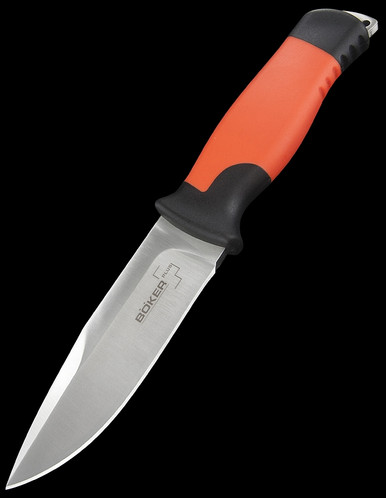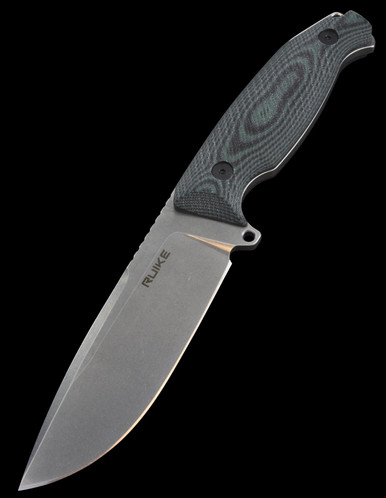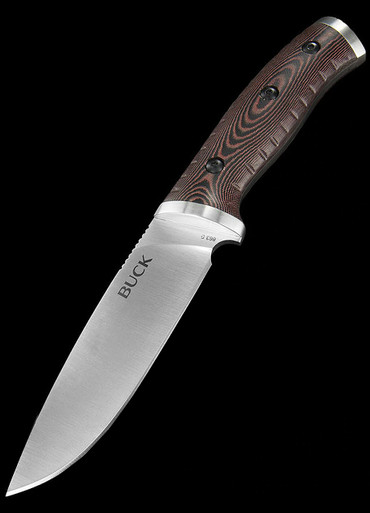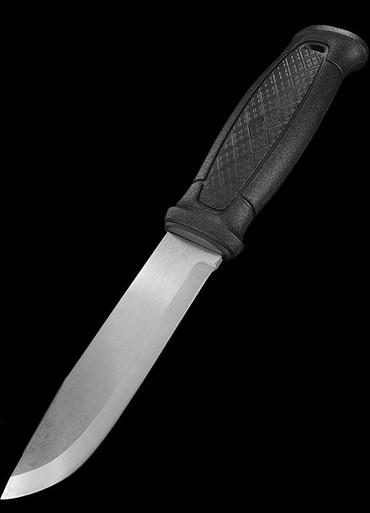Hi Slaphead,
What sort of knife are you after? What is it that you want it to do for you? Where do you anticipate putting it to work? Do you want to be able to carve things like spoons and camp aides, or are you looking for more of a trail clearing and fire wood prepping tool? Food preparation? Cutting veg, cutting bread, cleaning fish or game? Many things which may be presented as hard and fast rules can be found to have wiggle room if the goal posts are moved a bit. What are your goals?

The Roamer would be a better knife for camping/bushcraft/wilderness skills than the Argonaut. The Argonaut would be better for poking holes in people. It isn't just size, it is blade shape, style, handle shape and style. I handled a Roamer a couple of years ago while sitting in the Heinnie office, along with Mods Buckshot and Sargey and we all thought it a surprisingly good larger knife. Surprising for the price and that so many knives, lower priced or not, have poorer ergonomics. It felt good in the hand, all nicely rounded, simple, no silly rough areas or extra guards. I didn't buy it because I already have a couple larger knives of my own making, and I had already decided to blow my money.
One of the bigger knives I have has about an 8" blade of 5mm O-1 stock, full flat grind. I have found that its at the lower end of useful for a chopping tool. I have tried 6" knives for chopping and been even less impressed. Swing cutting to de-limb sapling poles is another matter, but a light weight 5" knife will do that and a weighty 4" with the right handle will too.
"Bushcraft is well and good if you have the right size pieces of wood at your disposal." I think many here would disagree with this understanding of what "bushcraft" is. I would say that knowing how to use the knife you have to the maximum potential is a useful skill in the outdoors, whether you want to consider it bushcraft, or survival, or whatever. I might argue that bushcraft is knowing how to use a field made baton, wedges, and choosing and sourcing the right wood for the job. Smaller knives can do a lot more than most people give them credit for.
Use of a baton allows you to expand the capability of a knife, but that expansion is more noticeable for a light 4" knife than it is for a heavy 6-8" blade. My experience has been that a longer blade, and an extra 1mm of thickness, does not allow you to split appreciably thicker rounds of firewood, although it can give you a bigger target for the baton once you sink the full blade depth. That is when a swedge is really not helpful. They really chew up a baton quickly.
Full disclosure, I prefer a flat/convex grind to a Scandi. I think it can be easier to sharpen for a beginner in the field since repeatedly hitting a particular angle isn't so important. However, Scandi grinds are not hard to sharpen at home and LOTS of instructors teach even more students to use them and swear by their ease of sharpening in the field, where the large contact area can help to guide the user to the right angle.
I am not a fan of the Eka W12. You notice I didn't list any of their knives. Their design has not changed appreciably in about 20 years, while competition have improved their ergonomics. Their factory edges are too obtuse to cut wood and the primary bevels are too short to be good slicers, so to get them working they need significant grinding on 120 or 220 paper to lower the secondary bevel.
All the best
Chris









